The newest GardenSpaceProgram mission, Waterfeeler, has completed it's primary objectives. Though it's solar panels deliver less power than hoped, pretty much all objectives, except longevity, were fullfilled.
Let's take a detailed look and the mission objectives and it's results:
Required mission objectives
These are the objectives that must the fulfilled. If anyone of these don't work, it's a mission failure.
Communicate with Mission Control
Communication worked better than expected. Direct communication with mission control worked pretty flawlessly, as did communication with both DGN1 and DGN2. Data transfer speed was much better than expected after i fixed some bugs in the DGN relais and my mission control software. Delay between packets could be dropped to 50ms without major data loss - better software for the next mission could drop that even further.
Downlink status of internal temperature, humidity and the battery voltage.
We got sufficient data to improve the next probes design. Battery voltage measurement seems to be a bit questionable, but this will need further investigation. I suspect it's not a sensing problem but a misunderstanding on my part on how to interpret the data.
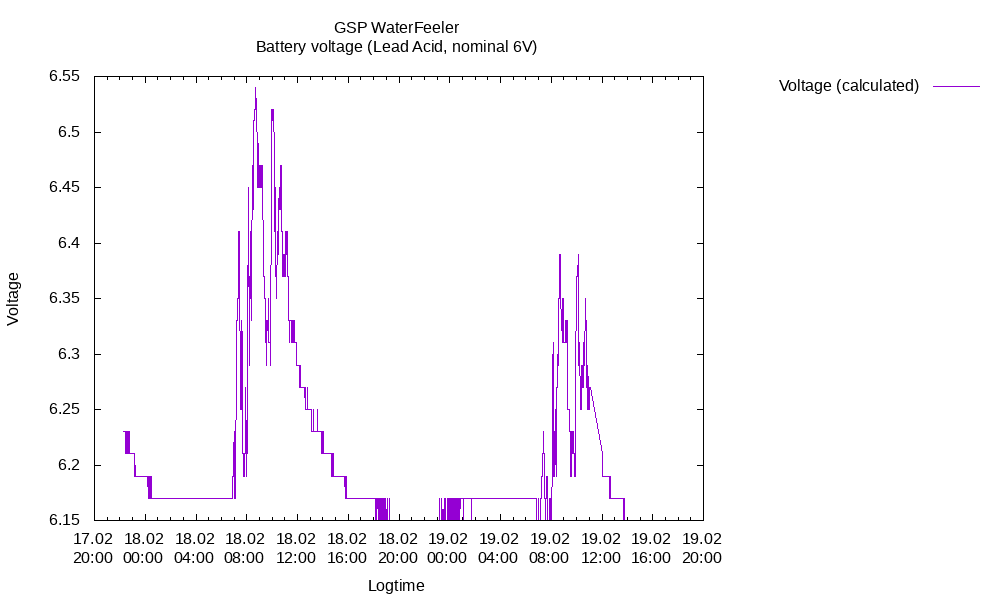 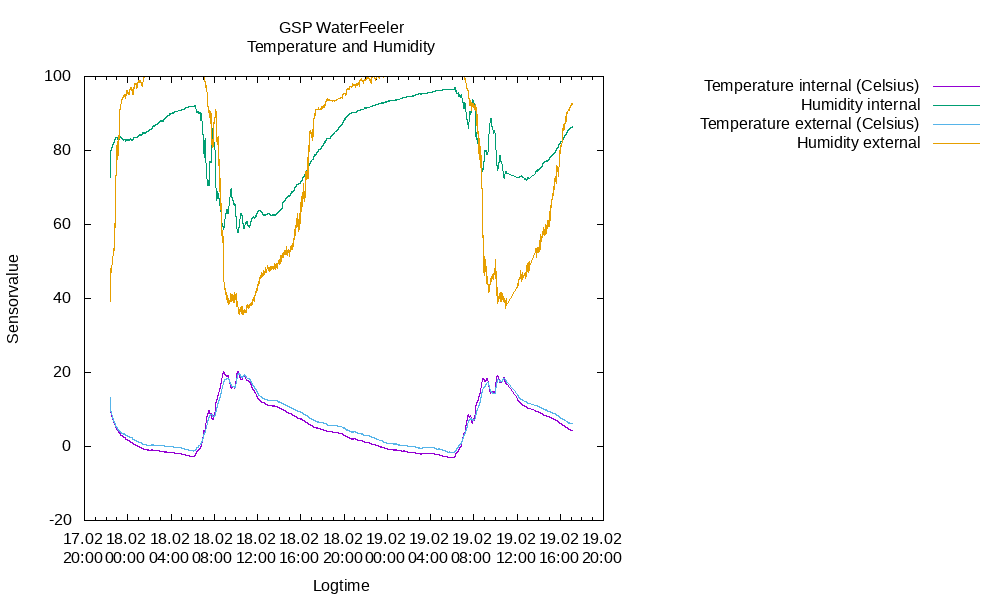
Detect precipitation, e.g. rain
We detected a short rainfall, but we did not detect decreased soil resistivity. That could be caused by already very wet soil, or i might need to delve further into the data.
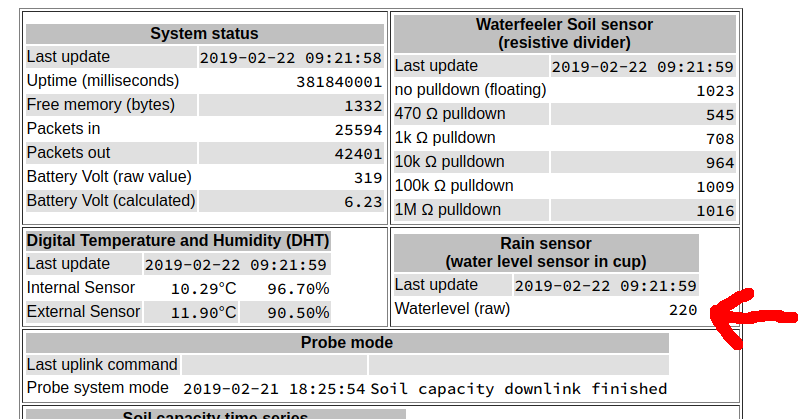
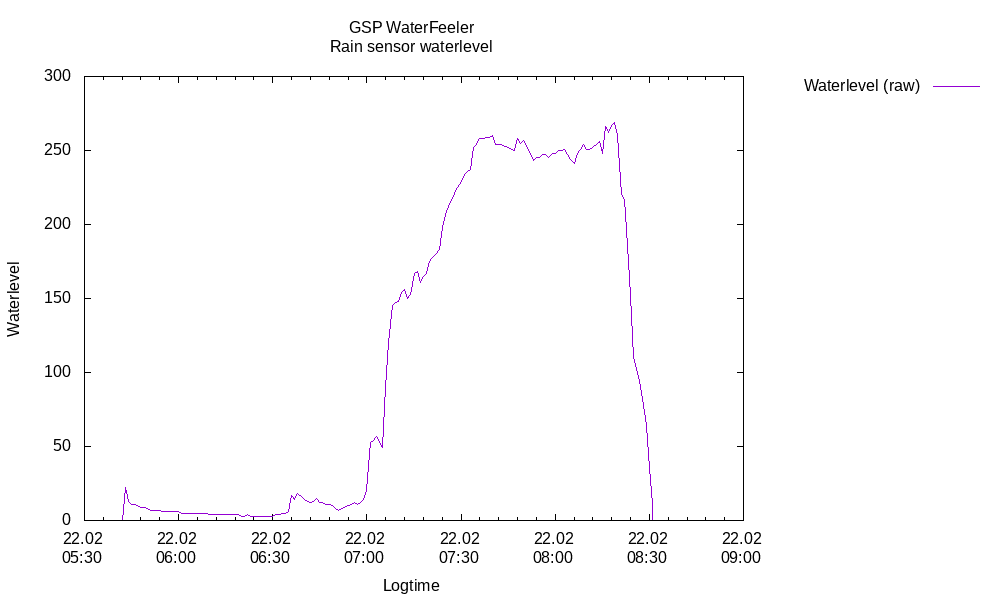
Measure soil resistance
We got some great data from the soil resistance experiment. We also proved that soil and air humidity are correlated. The data needs further investigation to design better instruments for future missions, but it's a great baseline.

Prove solar charging and evaluate power system design
Solar charging works, though not to the extend of keeping the probe online during all nights. The solar panels, in combination with the placement of the probe (limited time for charging each day) don't provide enough energy. This is the main reason i'm going to shut down the probe after only a week. I'm planning to launch an improved version as a new mission within a few weeks.
I'm still counting the design as a success because it basically works and it gives us enough information to improve the existing design by just slapping more/bigger panels on.
I'm still keeping the probe running for a couple of days, just to see how well it recovers after a power loss.
Function for a week
The probe survived a week. Barey, due to the above mentioned solar power issues. But it survived. And, as far as i can tell before disassembly of the probe, it survived without major water ingress, despite rain and daily morning dew.
Desired mission objectives
These are the nice-to-have objectives. If they don't work or can't be implemented in time, it's sad but not critical. But they must not interfer with the fullfilment of the "required" objectives.
Detect decreased soil resistance after rain
We have not detected decreased soil resistance (=increased humidity). But that might be due to a number of factors, including not looking into the data in the correct way. Investigations are continuing.
Measure soil capacity
The soil behaves, as expected, like a (very poor) capacitor, which we could detected with our soil sensor. This might (or might not) lead to a better soil humidity sensor in the future.
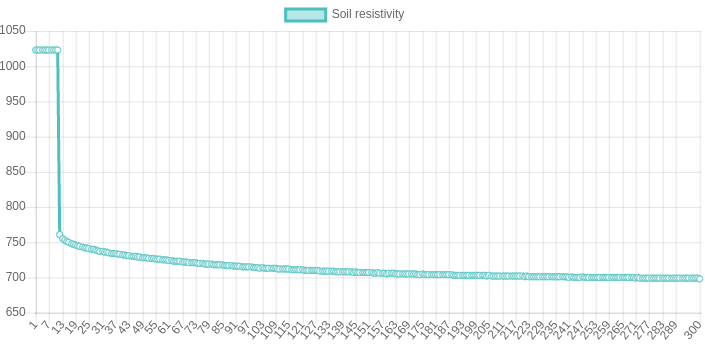
Prove the ability to act as a radio relais for future missions
Except for a small bug in the "forced relais mode" code, standard packet relais works as designed. The forced relais mode, which is an emergency relais system to override the source routing of a sender, has now been fixed in the DGN relais and will be incorporated into future probes after more testing.
Function for more than a month
Will not be attempted due to the power issues described above
Optional mission objectives
These optional objectives are neither urgent nor terribly important. But they could accelerate the Garden Space Program by providing additional data points and early test results.
Downlink stored test images
The pre-generated images stored in flash memory were downlinked multiple times. The color images was reconstruncted using Gimp. As mentioned above, after changing the rather conservative default settings of the probe and improving mission control software, the downlink speed of the images could be increased from over two minutes down to less than half a minute.

Try to detect a 50 Hertz sinewave in the soil from the power grid
No 50 Hertz sinewave was detected. The result is still considered a success, since we proved that there isn't a significant influence of the power grid on our soil experiment.
Save a soil capacity time series to EEPROM and restore it later to RAM
A pre-generated soil capacity series (test data) was successfully restored from EEPROM and downlinked multiple times. Overwriting the test data was not attempted during the mission, but was attempted before the launch of the mission.
Serve as radio relais for future missions
After debugging of the DGN1 and DGN2 software, WaterFeeler served as the relais of DGN1 for a few hours. This worked very nicely. "Forced relais mode" was not attempted due to a known bug in the flight software that would have prevented it from working correctly.
This proves that "normal" relais mode works and has served as a good target for fixing bugs in flight software for future missions.
Function for more than a year
Not attempted due to the power issued mentioned above
Conclusion
WaterFeeler fullfilled all the "Required" mission objectives as well as a good part of the "Desired" and "Optional" ones. We need to seriously increase solar power generation on future missions and possibly implement some power saving features as well, but all in all, the WaterFeeler mission worked better than expected.
All the raw mission data as well as more details on the probe design will be released in the next few days. |


